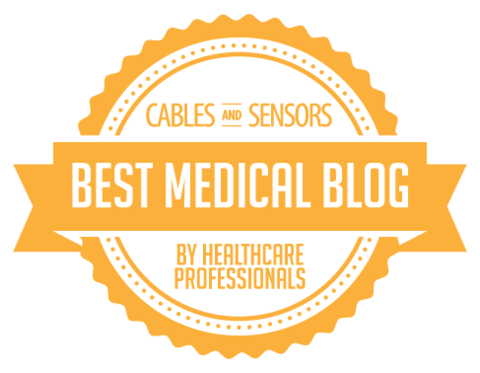Is Tuna a Heart Healthy Food?
 Tuna is a fatty fish providing high quality protein, B-vitamins, and selenium. The nutrients help the body produce red blood cells, reduce heart disease risk and macular degeneration, and promote brain growth. The protein provides essential amino acids used for body growth and maintenance, while the fat provides a rich source of heart healthy omega 3 fatty acids.
Tuna is a fatty fish providing high quality protein, B-vitamins, and selenium. The nutrients help the body produce red blood cells, reduce heart disease risk and macular degeneration, and promote brain growth. The protein provides essential amino acids used for body growth and maintenance, while the fat provides a rich source of heart healthy omega 3 fatty acids.
Many organizations, such as the USDA, American Heart Association, and American Dietetic Association have been encouraging people to eat more fish. This includes eating more tuna. Omega 3 fatty acids have been shown to reduce heart disease risk, blood clots, and stroke, relieve depression, and help fight certain cancers.
How Much Tuna
Lower Cholesterol – Understand Fatty Acids
Unless you have been living under a rock, you have probably heard the term fatty acids. But, do you understand what they are and how the right ratio will improve your heart health? I intend to clear up the confusion.
Types of Fatty Acids
There are numerous types of fatty acids. I am focusing on omega 3 and omega 6.
Unsaturated Fats
Omega 3 and omega 6 fatty acids are both unsaturated fats. To improve cholesterol levels, you want to replace the saturated fats (i.e. lard, shortening, ice cream, cheese) in your diet with unsaturated fats.
What does "omega" mean?
Most of you are familiar with the saying "alpha to omega", in other words, beginning to end. The "omega" indicates which carbon has the first double bond on the carbon chain when you start counting from the omega end. For omega 3, the first double bond is on the third carbon from the omega end of the carbon chain. I know you were wanting to review a little biochemistry today!
Essential Fatty Acids
Omega 3 and omega 6 fatty acids are also essential fatty acids.
Essential fatty acids are necessary for cardiovascular health, but our body cannot synthesize them. You can only obtain essential fatty acids through the foods you eat.
Omega 3 (Linolenic Acid)
To keep things simple, I am going to use the acronyms ALA, EPA, and DHA. These are all types of omega 3 fatty acids. If we consume a food containing the omega 3 fatty acid ALA, our body will convert it to EPA and DHA. Studies have shown a link between EPA, DHA, and heart disease. More studies are needed to understand ALA’s relationship.
Sources:
Oils – Canola oil, Soybean oil, Flaxseed oil (good source of ALA)
Seeds and nuts – flaxseeds, walnuts, pumpkin seeds, Brazil nuts, sesame seeds <
Vegetables – avocados, some dark leafy green vegetables (kale, spinach, mustard greens, collards)
Fish (good source of EPA and DHA) – salmon, mackerel, sardines, anchovies, albacore tuna, lake trout, herring
Omega 6 (Linoleic Acid)
I am going to throw in more acronym’s – GLA and AA – omega 6 fatty acids. Linoleic acid is converted to GLA and on into AA by the body. Researchers are finding indications of a link between GLA and EPA, in relation to heart health and reduced blood pressure. High intake of sugars, alcohol, trans fats, and various other factors can inhibit the conversion from linoleic acid to GLA.
Sources:
Oils – Sunflower oil, corn oil, safflower oil, soybean oil, cottonseed oil, flaxseed oil
Seeds and nuts – flaxseeds, pumpkin seeds, pistachio nuts, sunflower seeds, pine nuts
Meat – chicken, beef
For optimum heart health, the ratio between omega 6 fatty acids and omega 3 should be between 1:1 and 4:1. A practical example of what a 1:1 ratio means, for every 3 ounces of beef you eat, you would need to eat 3 ounces of tuna (I do not mean in the same meal!). The ratio for the typical American diet is 11:1 to 30:1. This poor ratio is linked with heart disease, among several other health issues.
Bottom Line:
For heart health, increase your intake of foods containing omega-3 fatty acids, while cutting back on omega-6 fatty acid sources. For example, switch from corn oil to canola oil, increase the number of meals you eat that contain fish each week, and grab walnuts instead of pistachios.
February is American Heart Month. In recognition of American Heart Month you can access Heart Health Made Easy at a 25% savings. Learn more about this take action guide to lower cholesterol and blood pressure at http://www.hearthealthmadeeasy.com.
All the best,
Lisa Nelson RD
https://www.lisanelsonrd.com
Lower Cholesterol – Include rich sources of omega 3 fatty acids in your diet everyday.
The list of benefits associated with omega 3 fatty acids continues to grow. By increasing your intake of omega 3 fatty acids you’ll decrease triglycerides, reduce blood pressure, increase HDL cholesterol, reduce arterial wall inflammation, and the list goes on.
Here are a few steps you can take to increase your omega 3 intake:
1. Eat fish at least twice a week.
2. Add ground flaxseed to foods.
3. Take a fish oil or flaxseed oil supplement. (Discuss all supplements with your MD.)
4. Snack on nuts and seeds rich in omega 3’s, such as walnuts.
All the best,
Lisa Nelson RD
eNutritionServices
Trans Fats Banned in California
Good news if you live in California! Starting in 2010 restaurants will be banned from using trans fats in food preparation. This will be a major benefit to those of you struggling to lower total cholesterol, low LDL “bad” cholesterol, or raise HDL “good” cholesterol. To improve your lipid profile you should follow a diet with less than 30% daily calories from fat. Ideally your intake of trans fatty acids should be zero for heart health. Since numerous restaurants affected will be nationwide chains, hopefully the trend will start to spread and avoiding trans fats when dining out will not be an issue after a few more years.
All the best,
Lisa Nelson, RD, LN
eNutritionServices
Your Checklist to Lower Cholesterol
Here’s a checklist of the top 8 things you must do if you want to successfully lower your cholesterol and keep it low.
Know your numbers
Have you had a lipid profile? Do you understand the numbers? If you are going to successfully lower cholesterol you need to know your numbers and what they mean. The most effective way to raise HDL is not necessarily the best way to lower LDL.
Evaluate your lifestyle
There are risk factors for high cholesterol that you can not control, such as age, gender, and family history, but there are factors you can control. For example, you can reduce risk by not smoking, increasing your activity, and losing extra weight.
Balance your fats
Reduce unhealthy saturated fats in your diet and replace them with heart healthy unsaturated fats. Total fat intake should be 30% or less of your total daily calories. Out of this 30%, saturated fat should be limited to 7%.
Be active
Physical activity lowers triglycerides and raises HDL (good) cholesterol. Shoot for 30 minutes 5 or more days a week. If you are not currently active, check with your MD before beginning an activity program.
Eliminate trans fats
You need to be food label savvy and watch out for trans fats. Trans fats raise LDL (bad) cholesterol, lower HDL (good) cholesterol, and raise triglycerides. Limit trans fats to 1% or less of your daily caloric intake.
Understand triglycerides
Triglycerides are impacted the most by your simple sugar and alcohol intake. If you are struggling with high triglycerides, you need to use a different strategy to get your cholesterol under control.
Increase dietary fiber
A high fiber diet is necessary for heart health. You need 25-35 grams of dietary fiber daily, especially soluble fiber. For every 1-2 grams of daily soluble fiber intake, LDL (bad) cholesterol is lowered 1%.
Add omega 3 fatty acids
For heart health and lower cholesterol, you want to improve the ratio of omega 3 to omega 6 fatty acids. Omega 3 fatty acids are involved in the regulation of heart rate, blood pressure, and blood clotting.
Receive a step by step plan to promote heart health with a Mini Diet Makeover. As a special New Year’s bonus you’ll recieve a complimentary copy of the Calorie Counter for Dummies. Learn more here – https://www.lisanelsonrd.com/minidietmakeover.html
All the best,
Lisa Nelson RD
How to Lower Cholesterol in 8 Simple Steps
Do I need to take omega 3 and omega 6 together?
A reader from The Heart of Health, Jessica, sent in a question about omega 3 and 6 fatty acids. If you are struggling with weight loss, you should visit Jessica’s blog allabouthabits.com, for some weight loss motivation. She openly shares her weight loss struggles.
The question:
About omega 3’s and 6’s, I heard that they should be taken together, and not just having one omega 3 or omega 6 alone. It has something to do with digestion and breakdown process. Is that right?
The answer:
There are two types of fatty acids – essential and non-essential. The body can synthesize non-essential fatty acids, while the only way we get essential fatty acids is from what we eat. Omega 3 and Omega 6 are both essential fatty acids – we must get them from foods and/or supplements.
Omega 3 – ALA, EPA, and DHA are all acronyms that represent omega 3 fatty acids. If we consume ALA, our body will convert it to EPA and DHA.
Omega 6 – Omega 6 is also known as linoleic acid. Linoleic acid is converted to GLA, another omega 6 fatty acid, in the body. GLA and EPA (an omega 3 fatty acid) work together to promote bone and heart health.
So, yes, omega 3 and omega 6 work together and both are needed for bodily functions.
But, omega 6 does not require supplementation. The typical American diet is very high is omega 6 fatty acids. A main source of omega 6 fatty acids is corn oil, which is very prevalent in our society. Other sources include sunflower oil, safflower oil, soybean oil, sunflower seeds, pine nuts, pistachio nuts, and pumpkin seeds.
The ideal ratio between omega 6 and omega 3 fatty acids should be 1:1 or 4:1. A typical diet in the U.S. is 11:1 to 30:1. This poor ratio is linked with heart disease, among several other health issues.
Certain conditions can interfere with the conversion of linoleic acid to GLA, such as advanced age, excess alcohol consumption, viral infections, and various other factors. In these situations a GLA deficiency would be present and supplementing the GLA omega 6 fatty acid would be beneficial. However, this is not the case for the majority.
To reduce heart disease risk you want to increase the amount of omega 3 fatty acids in your diet and decrease omega 6’s. Omega 3 is a common deficiency in the U.S.
Omega 3 and omega 6 are both essential fatty acids and work together to promote health. However, if you follow a typical U.S. diet, you want to increase your omega 3 intake and decrease your omega 6 intake. Therefore, supplementing omega 3 AND omega 6 is not beneficial.
I hope my answer has not confused you more! I will be publishing at least two more articles this summer related to fatty acids.
All the best,
Lisa Nelson RD
Be Heart Healthy and Lose Weight



